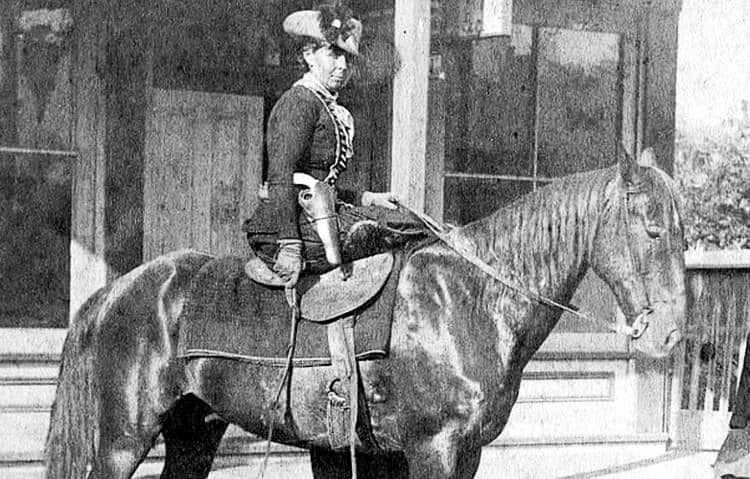Dangerous bandit queen Belle Starr began life as a literal Southern belle. She grew up in luxury, and attended a finishing school for young ladies where she was taught the social graces, piano, and the classics. She also happened to grow up around Jesse James and other members of the James-Younger Gang. Shortly after the Civil War, she married a horse thief, and went on to become an outlaw in her own right, whose criminal misdeeds eclipsed those of her husband. Following are thirty things about her and other dangerous women from history.

30. A Dangerous Southern Belle
Crack shot Old West outlaw Belle Starr was a fashionable criminal who paid attention to style. She rode her horse sidesaddle while clad in a black velvet riding habit, a plumed hat atop her head, and a pair of pistols with cartridge belts across her hips. An associate of the James-Younger Gang, which featured the notorious Jesse James and became infamous for a series of bank, train, and stagecoach robberies across ten states, Belle became a dangerous criminal in her own right.
Born Myra Maybelle Shirley in 1848 into a well-off family near Carthage, Missouri, Belle grew up in relative comfort. She attended Missouri’s Carthage Female Academy, where she was taught the day’s feminine refinements, learned piano, and received a classical education. That should have put her on the typical Southern belle path of a proper young lady who aspired to marry a prosperous man, raise a family, and do nothing interesting, let alone controversial, in her life. As seen below, this belle took a different path.

